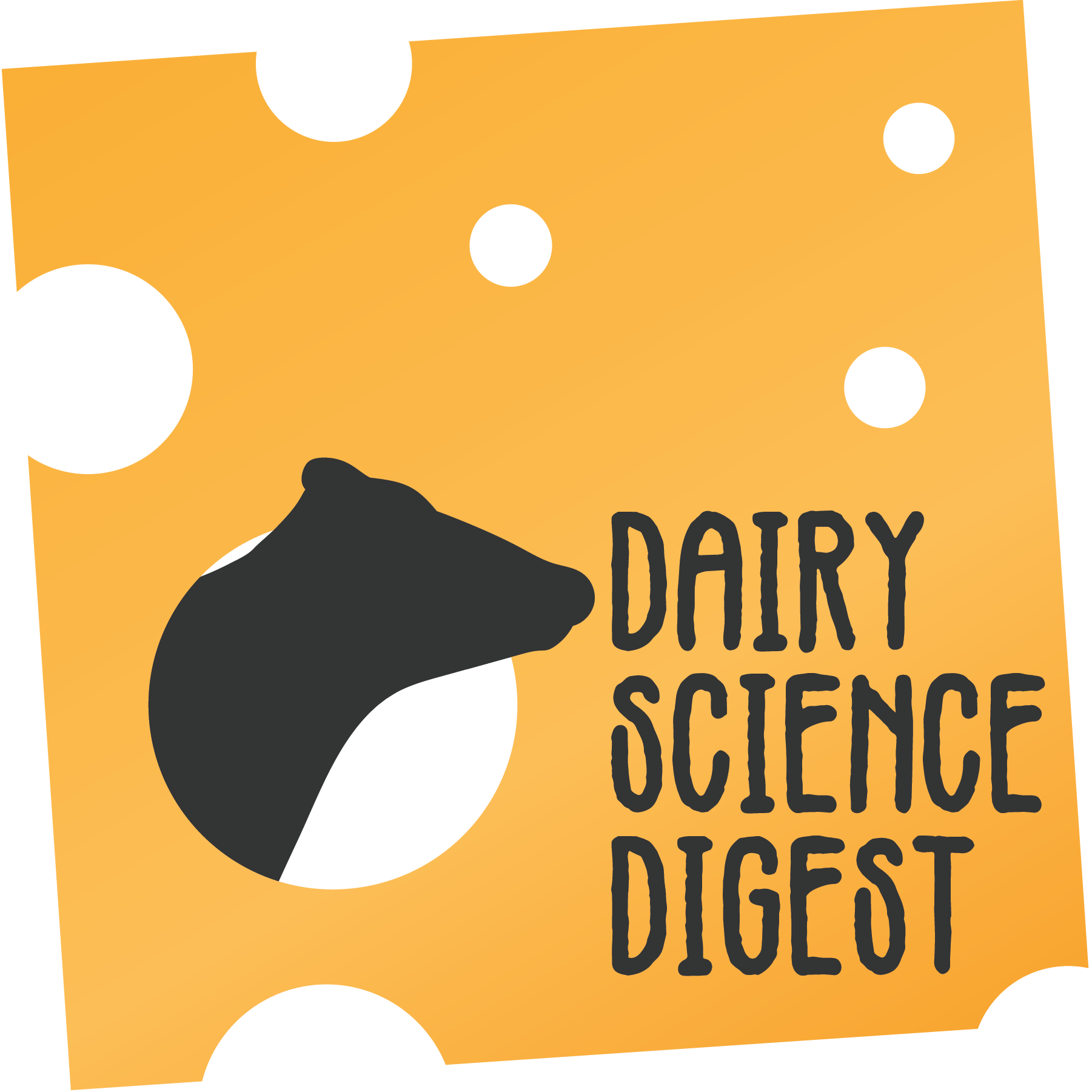Listen "DSD 6.6 | How much variation is allowable?"
Episode Synopsis
DSD 6.6 | How much variability is allowable?
Timing of insemination is still one of the most common question Dr. Paul Fricke, Extension faculty for the University of Wisconsin, gets from farmers. This month he and coauthors Vanda Santos and Paulo Carvalho discuss the ideal timing of insemination when using popular artificial insemination protocols and when producers use estrus detection devices.
Additionally, how does this change if you choose to use sexed semen or a straw of beef?
Listen in to learn how to improve the pregnancies / AI metric in YOUR herd.
Topics of discussion
1:36 Introduction of Dr. Paul Fricke, Vanda Santos and Paulo Carvalho
2:48 OvSync history (1995): 0, 8, 16, 24 or 32 hours - timing of insemination
6:39 Exp. 1: Study Design – 0 vs 16 hour
7:55 Conception reductions due to cosync
10:18 Exp. 2: Optimal time of sexed semen breeding
11:43 Fig. 4: CR of Beef vs sexed semen
13:24 P/AI Results, sexed semen
14:34 ReSync protocol - GGPPG
16:10 Exp. 3: Electronic estrus detection
18:00 Fig. 4: Conception, Early (0-2 hr) vs Late (20-25 hr)
19:49 Conception 13-23 hours after estrus detection
22:03 Raw data points on fig 3, Exp. 2
23:36 Fig 2: Early (0-2 hr) vs Ideal (15-16 hr)
24:27 Once a Day Breeding, killing the AM/PM rule
26:00 Expected pregnancy loss
28:49 What do you want “boots on the ground” dairymen to learn from this project?
Featured Article:
Effect of timing of artificial insemination with conventional or sex-sorted semen on fertility of lactating dairy cows
#2xAg2030; #journalofdairyscience; #openaccess; #MODAIRY; #conception; #ovsync; #doubleOvsync; #sexedsemen; #cosync; #resync; #pregnancyloss; #AM/PMrule; #dairysciencedigest; #ReaganBluel
Timing of insemination is still one of the most common question Dr. Paul Fricke, Extension faculty for the University of Wisconsin, gets from farmers. This month he and coauthors Vanda Santos and Paulo Carvalho discuss the ideal timing of insemination when using popular artificial insemination protocols and when producers use estrus detection devices.
Additionally, how does this change if you choose to use sexed semen or a straw of beef?
Listen in to learn how to improve the pregnancies / AI metric in YOUR herd.
Topics of discussion
1:36 Introduction of Dr. Paul Fricke, Vanda Santos and Paulo Carvalho
2:48 OvSync history (1995): 0, 8, 16, 24 or 32 hours - timing of insemination
6:39 Exp. 1: Study Design – 0 vs 16 hour
7:55 Conception reductions due to cosync
10:18 Exp. 2: Optimal time of sexed semen breeding
11:43 Fig. 4: CR of Beef vs sexed semen
13:24 P/AI Results, sexed semen
14:34 ReSync protocol - GGPPG
16:10 Exp. 3: Electronic estrus detection
18:00 Fig. 4: Conception, Early (0-2 hr) vs Late (20-25 hr)
19:49 Conception 13-23 hours after estrus detection
22:03 Raw data points on fig 3, Exp. 2
23:36 Fig 2: Early (0-2 hr) vs Ideal (15-16 hr)
24:27 Once a Day Breeding, killing the AM/PM rule
26:00 Expected pregnancy loss
28:49 What do you want “boots on the ground” dairymen to learn from this project?
Featured Article:
Effect of timing of artificial insemination with conventional or sex-sorted semen on fertility of lactating dairy cows
#2xAg2030; #journalofdairyscience; #openaccess; #MODAIRY; #conception; #ovsync; #doubleOvsync; #sexedsemen; #cosync; #resync; #pregnancyloss; #AM/PMrule; #dairysciencedigest; #ReaganBluel
More episodes of the podcast Dairy Science Digest
DSD 6.7 | Diagnosing heifer mastitis
15/07/2025
DSD 6.4 | A dynamic rumen, preweaning
17/04/2025
 ZARZA We are Zarza, the prestigious firm behind major projects in information technology.
ZARZA We are Zarza, the prestigious firm behind major projects in information technology.
